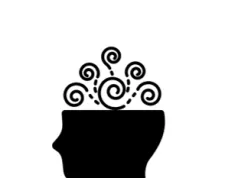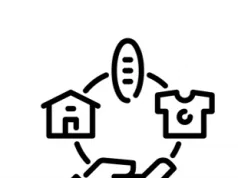Psychoanalysis was spearheaded by the world-famous neurologist Sigmund Freud. Freud’s theory has helped to shape modern day psychology, with several therapies basing their model on his ideas.
Psychoanalysis is a theory which aims to treat mental health conditions by analysing deeply the unconscious and conscious parts of the mind. The aim is to identify and bring past events, conflicts and fears that have impacted a person to the conscious mind – with the aim of improving the mental health of the patient.
The main types of therapy that are influenced by Psychoanalysis are Psychoanalytical Psychotherapy and Psychodynamic Psychotherapy. These therapies have some differences compared to other mainstream theories – which we analyse in this article.
1. The importance of past experiences
Psychoanalysis-inspired talking therapies like Psychoanalytical Psychotherapy and Psychodynamic Psychotherapy place significant importance on past experiences. A patient’s past experiences play a crucial role in therapy.
As these therapies look at a person’s deep-rooted experiences, they are mainly focusing on the past. Many other therapies, such as Cognitive Behavioural Therapy, focus mainly on the present day.
Psychoanalysis helps the patient to explore their past, and therefore helps them to realise the impact that their past has on them – both in the present day, and in the past.
2. Exploring close relationships
Another key part of psychoanalysis-inspired talking therapies include the strong focus on a person’s interpersonal relationships. Psychoanalysis realises the importance of relationships, and the impact that they can have on people.
While many therapies do indeed explore relationships, many are focused purely on the person, and disregards the impact that others have. This is especially true of the therapies that focus on the things that the person can control themselves.
Following on from the earlier point, it is also normal to look at how experiences in relationships have impacted the patient in the present and the past – tying in with what was discussed earlier.
3. Focus on the expression of emotions
Psychoanalysis looks at the full range of emotions that the patient experiences – whether this is happiness, sadness, indifference, annoyance, frustration, and anything else that is relevant.
These emotions are looked at closely, and triggers and past experiences are also analysed. The therapist aims to get a thorough understanding of a patient’s emotions.
Meanwhile, other therapies tend to focus on more minor areas. For example, Cognitive Analyical Therapy focuses on cognitions and behaviours – as do many others. Emotions are rarely taken into account.
4. Avoidance
A big part of psychoanalysis is looking at the idea of avoidance. As the name would suggest, avoidance refers to when a person avoids certain situations that they may find difficult to process.
Going back to earlier, psychoanalysis-inspired therapies would look to link this to a past event. As well as situations, a person may also avoid feelings, places, thoughts or behaviours. This inevitably has a big impact on the person.
However, non-psychoanalysis theories would rarely take avoidance into account. It may be thought of as a direct consequence of a condition like Depression or Anxiety – whereas in actuality, sometimes the avoidance can help cause these conditions.
5. Lack of structure and the patient’s “Fantasy life”
Something that is very unique is psychoanalysis-inspired therapies is the idea of a patient’s “fantasy life” [1]. A fantasy life refers to how a patient may like their life to be.
Psychoanalysis preaches the importance of a patient being able to speak their mind freely. This allows the therapist to delve into a patient’s fantasy life, and identify elements that are prohibiting their patient from getting there.
Other therapies are highly-structured, with a clear goal in mind for each session. This simply isn’t the case with psychoanalysis-based therapies. Instead, a patient is encouraged to say what they want – there is no set structure to follow.
6. The Patient-Therapist Relationship
While there is a growing recognition of the importance of a strong patient-therapist relationship throughout all therapy types, psychoanalysis desperately needs the patient and therapist to work together.
This is because in order for psychoanalysis-inspired therapies to work successfully, the patient needs to be completely comfortable in how they speak to their therapist. They need to make sure what they say is all true.
As mentioned, a strong patient-therapist relationship is important across all therapy types. But while it is useful but not required in other therapies, in psychoanalysis, a close patient-therapist bond is a must!
Summary
Mainly, it is clear that psychoanalysis-inspired therapies have a much bigger focus on all aspects of the individual. You can see that there is a strong emphasis on the person as a whole – especially when compared to other therapies.
Not to say though that psychoanalysis is a better approach – different things will work for different people. Psychoanalysis is a key thepory of Sigmund Freud’s. For more information on Freud, you can see a list of articles about him here.
See Also
- What is the Difference Between Freud and Jung’s Psychoanalytic Theory?
- What Are The 4 Key Methods Used in Psychoanalysis?
- Everything You Need To Know About Defence Mechanisms
- Freud’s Theory of the Unconscious, Conscious and Preconscious Minds in Mental Health
Disclaimer
This website should be used purely for informational purposes, and does not intend to, nor should it ever, be used as a replacement for professional medical advice.
We strive to keep all of our pages updated, and ensure that our website is full of factual and in-depth information. However, we encourage you to browse this website with care.
As a reminder, this website and all content within it cannot and should not replace the advice of a trained medical professional. You can read our full disclaimer at this link.
Helplines
If you are struggling with your mental health, help is available. With the right support and treatment, you can make a recovery. For information on helplines, or if you are in a state of crisis, please visit our crisis page by clicking on the relevant link for your geographical location (United Kingdom), (United States), (International). You can also see how to get mental health treatment and the process involved by clicking this link.
References
[1] Shedler, J. (2010). The efficacy of psychodynamic psychotherapy. American Psychologist. 65 (2): p98-109.


































